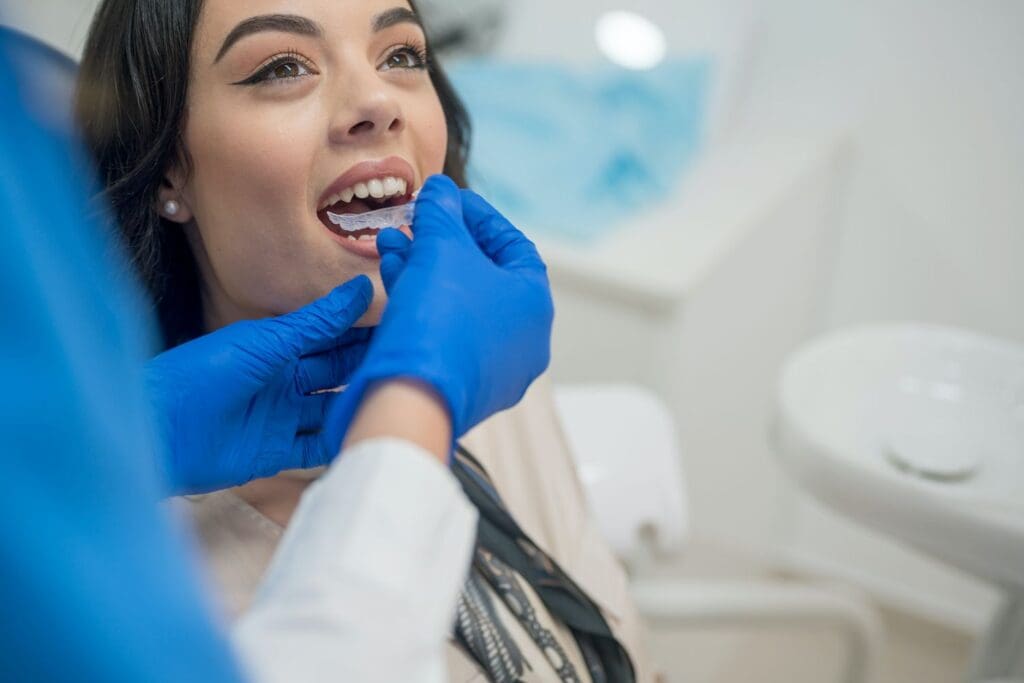Having a healthy and properly aligned bite is not just important for a confident smile. It is also better for overall oral health. Unfortunately, many people have common bite problems that can affect their daily lives. The good news is that orthodontic treatments, such as clear aligners, offer effective solutions for correcting these issues. You can have a straight smile and better oral health by talking with your dentist. They can help you choose the right dental plan for you.

What are Common Bite Problems?
Before you can straighten your smile, you have to know what type of bite problem you have. This will help your dentist choose your treatment options.
Overbite
An overbite occurs when the upper front teeth significantly overlap the lower front teeth. This issue can lead to uneven wear on the teeth, jaw pain, and even speech difficulties. Patients with an overbite may be more susceptible to broken teeth. Also, an overbite can cause the lips not to meet, which can dry out the mouth. This can increase the risk of tooth decay.
Underbite
An underbite is the opposite of an overbite, where the lower teeth protrude past the upper teeth. It can result in a “bulldog” appearance. Over time, an underbite can affect how your jaw sits together. This can also lead to difficulty chewing and speaking. Many people can experience jaw tension and headaches.
Crossbite
A crossbite occurs when the upper teeth sit inside the lower teeth when biting down. This bite problem can cause premature tooth wear, affecting the protective enamel. Unfortunately, this means that you are more susceptible to developing tooth decay. Additionally, you can develop jaw pain and other structural issues.
Open Bite
An open bite is characterized by a gap between the upper and lower front teeth when the jaws are closed. This condition can affect speech, chewing, and overall facial aesthetics.
How Clear Aligners Work
Clear aligners are a common option to straighten your teeth gently.
Customized Treatment Plan
Clear aligner treatment begins with a consultation with an orthodontist who will assess your bite and discuss your goals. Using advanced technology, such as 3D scanning and computer modeling, they will create a customized treatment plan to address your specific bite issues.
Series of Clear Aligners
Once complete, they will create a series of clear aligners. You will only wear each aligner in the series for a specific amount of time, typically two weeks. They will slowly move the teeth closer to right positions. As the treatment progresses, you will switch to a new set of aligners until you get the desired bite alignment.
Convenience and Comfort
Clear aligners offer several benefits over traditional braces. They are removable. This allows you to eat and drink without issues. You can easily maintain your oral hygiene routine. Additionally, they are made of smooth, comfortable plastic, minimizing discomfort and irritation often associated with braces.
Regular Monitoring and Progress Checks
Regular check-ups with your dentist will be scheduled throughout your treatment to watch progress and make any the correct adjustments. This ensures that your bite problems are properly fixed. Also, it helps your treatment plan remain on track.
